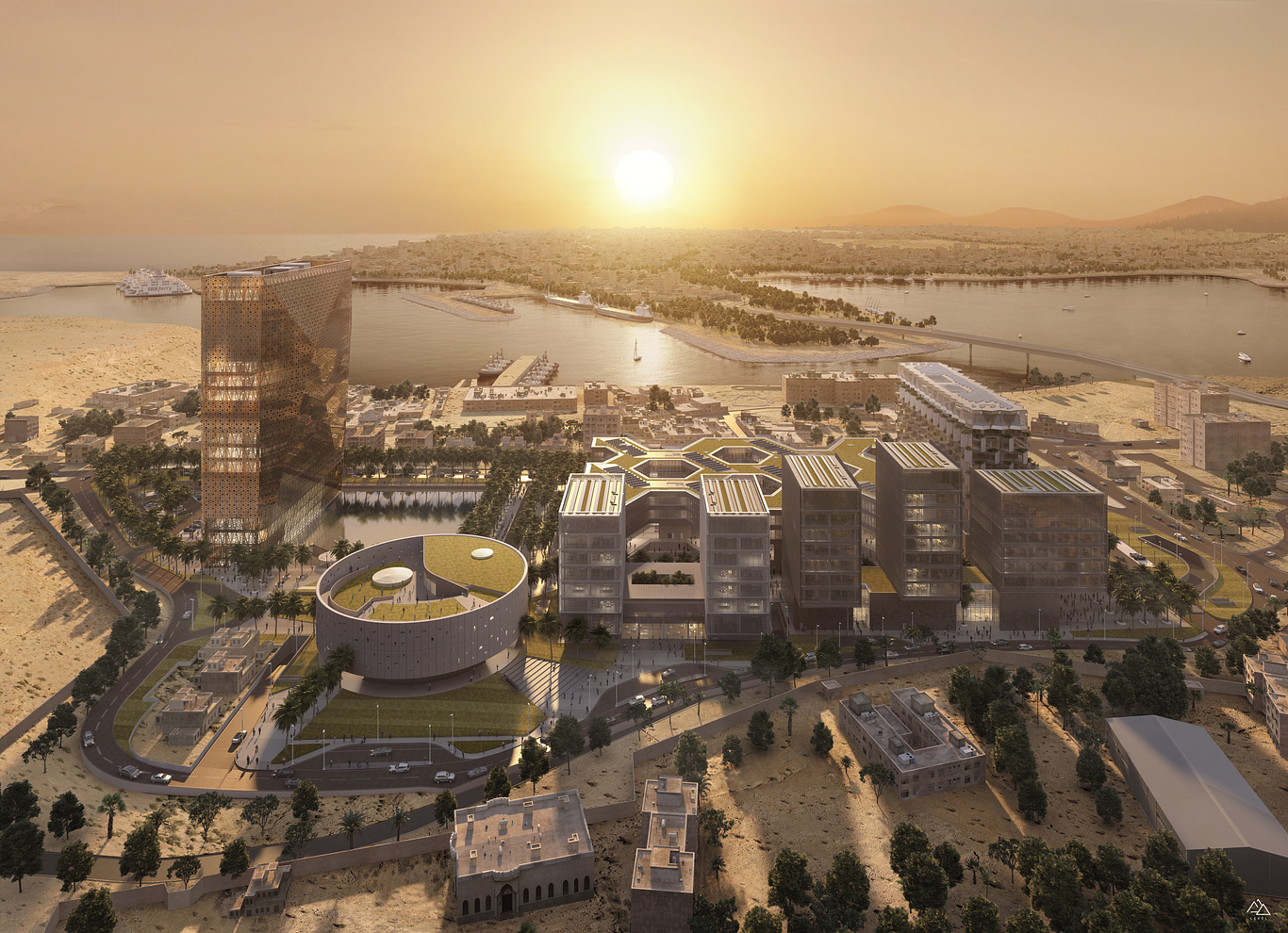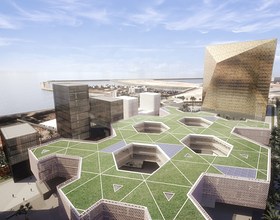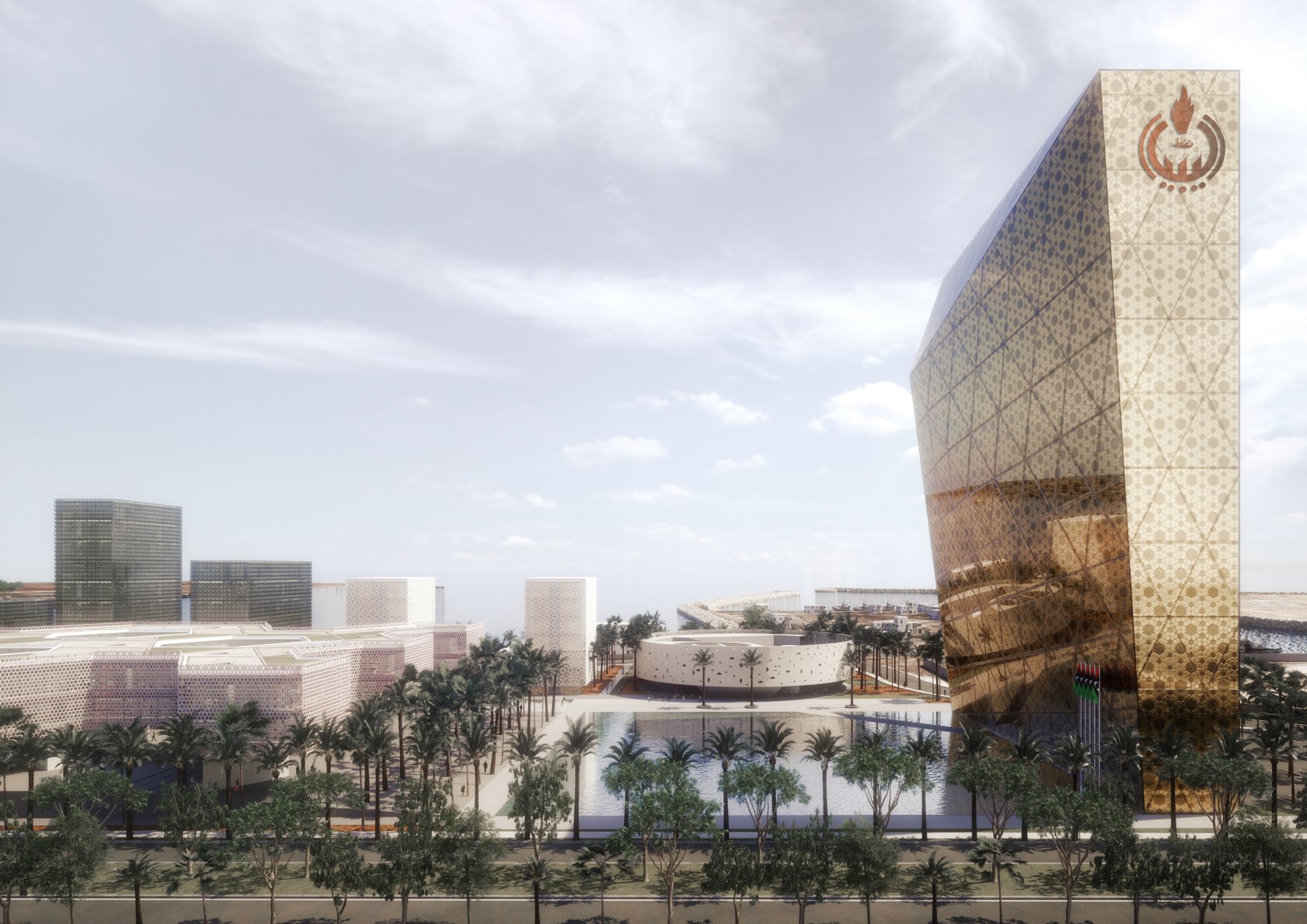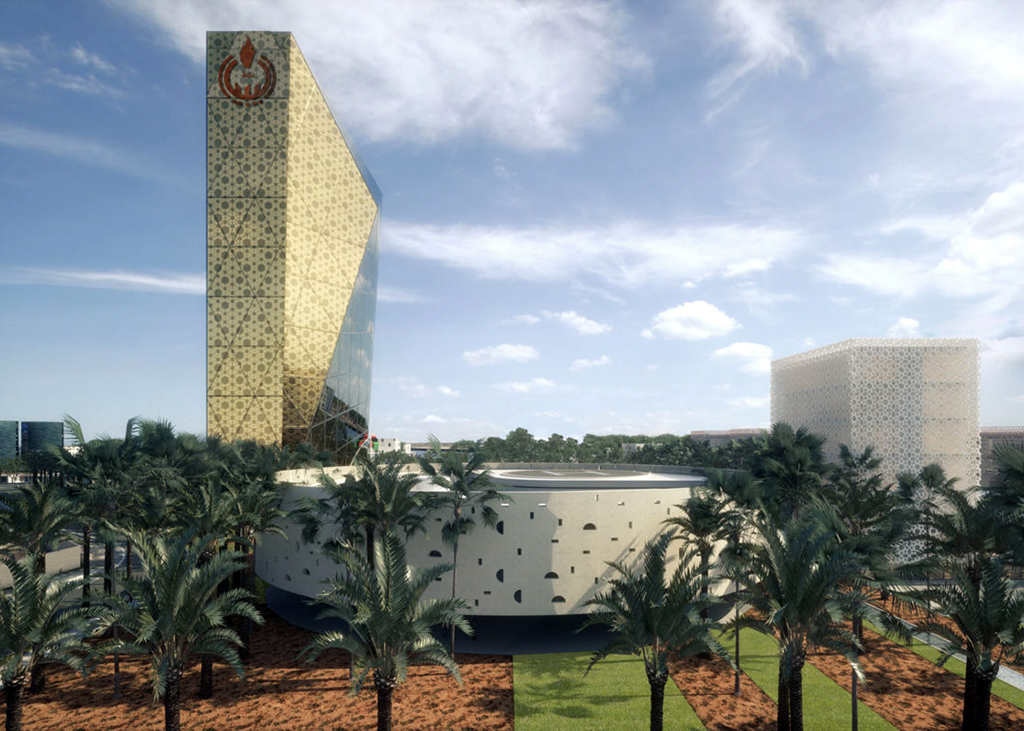
Close

Approach Words: Sustainability, Urban Livability, Urban Resilience
Public Policy Instruments: Organization, Physical Intervention, Planning
The Benghazi Business District is a new development initiative in Benghazi, Libya, focused on revitalizing the city’s economic center1 and supporting Libya’s post-conflict recovery.2 While an official launch date hasn’t been publicly confirmed, the district aims to position Benghazi as a “regional hub for commerce and trade”,3 aligning with Libya’s national reconstruction strategy.4 The project is part of broader efforts to restore Benghazi’s historic role as a Mediterranean trade gateway by stimulating private-sector growth and attracting foreign investment.5

Title: Aerial view of Benghazi Business District.
Source: Click Here

Title: Sustainable elements of Benghazi Business District: Green roofs.
Source: Click Here

Title: Visualization of project facades design.
Source: Click Here

Title: Project entrance of Benghazi Business District.
Source: Click Here
Spanning 6 hectares, the district includes a built-up area of 130,000 square meters, integrating modern infrastructure with sustainable and culturally inspired design. Key components include:
The project incorporates solar energy solutions and passive cooling techniques, such as shaded courtyards; improving energy efficiency while preserving cultural identity.11 12

Owner/Developer (Public)

Owner/Developer

The project is overseen by the Libyan government’s Manateq Economic Zones Authority, partnering with international firms such as Artelia Group for master planning and engineering.13 Regional and European contractors are involved in construction, though specific partnerships have not been publicly disclosed.14
Implementation is structured in two phases:
As of 2024, Phase 1 is underway, with progress in utility systems and road networks.17 While the project is expected to support Benghazi’s economic revival, detailed projections on job creation and economic impact have yet to be determined.18
Project Link
Endnotes
N.A.
References